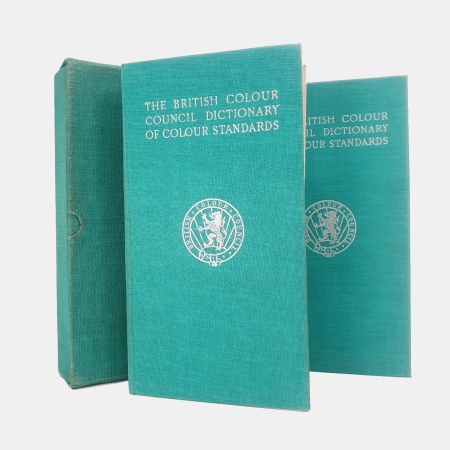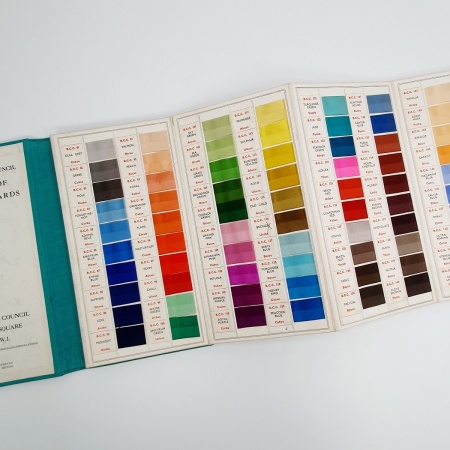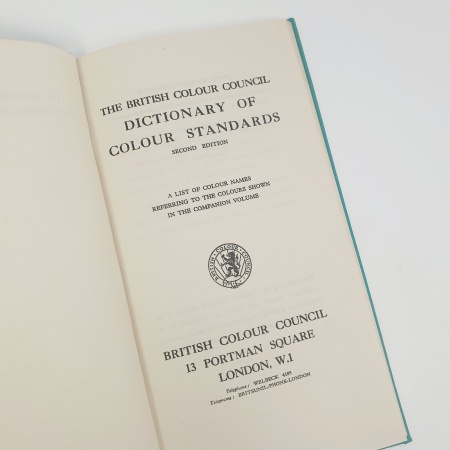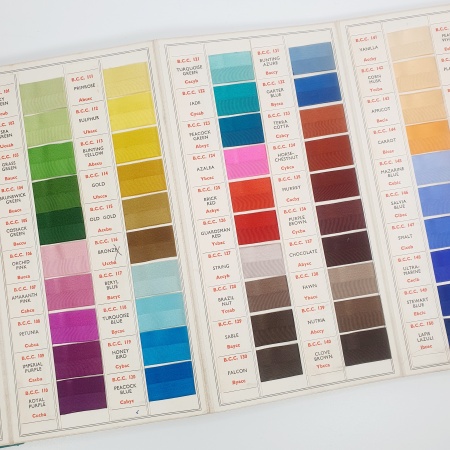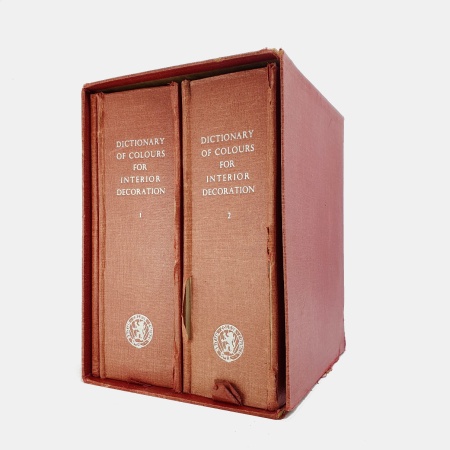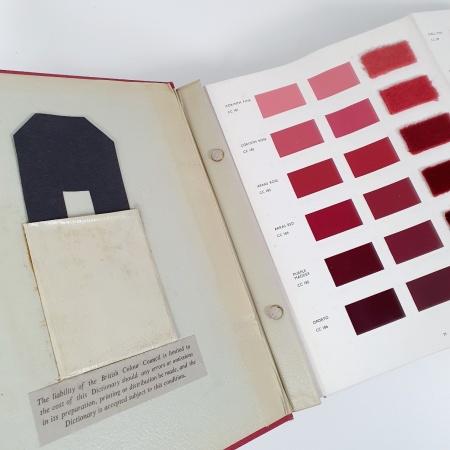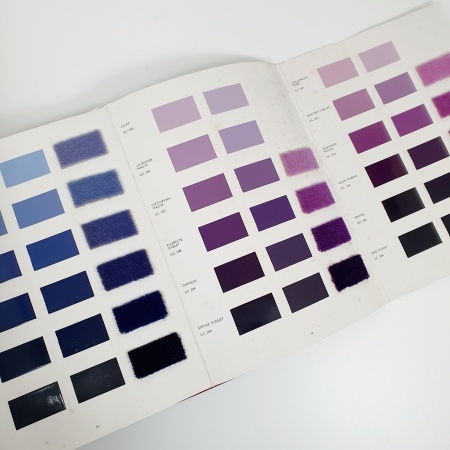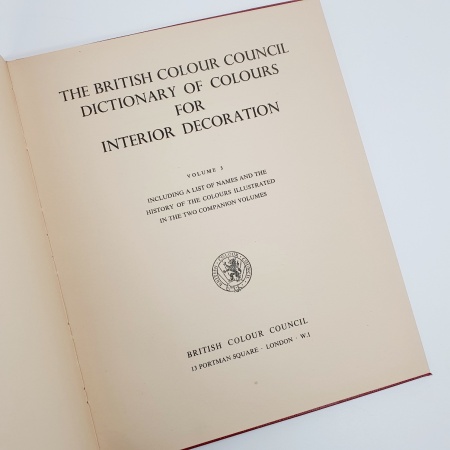[British Colour Council]
The British Colour Council was established in 1930 with the colonial aim of placing 'colour determination for the British Empire in British hands'. The Council's Dictionary of Colour Standards was first published in 1936 with an intention to standardise colours across all colour-using industries. It was eventually used in fields as diverse as decorating, dermatology, psychology, ceramics, map-making, and textiles. The original 1936 edition contained 220 swatches in the form of coloured ribbons, each with a combined matte and gloss weave. A second edition in a similar format was published in 1951, but with 20 additional colours. This 1961 edition reprints this second edition but with the colour samples being dyed wool, rather than ribbons and without the text volume. 240 colours are represented with knotted wool attached to 10 sample cards. Each sample is given a name and a B.C.C. Number. A note in this 1961 reprint explains that 'African Brown' has replaced (to a limited extent) the more offensive 'N***** Brown', reflecting gradual changes in attitudes as the book moved on from its British empire-led foundations. The book remains an invaluable aid for colour inspiration and matching, however few copies survive because they were used so extensively as working tools.
[Further reading: Baty, Patrick, 'The Anatomy of Colour', Thames & Hudson, 2017, pp. 262]
British Colour Council. London. 1961. 'Wool' reprint of the 1951 second edition. First published in 1936. Caledon Jade Green cloth-bound folding case, with silver titles to front board and spine, popper fastenings; 240 knotted wool colour samples attached to 24 sample cards bound in with silver cord. English. 250 x 225mm. 0.6kg. . Very good; slight wear to outside of case, with pencil and ink notations and a 'Reference Copy' stamp; internally very good with samples all present, fresh and bright.

